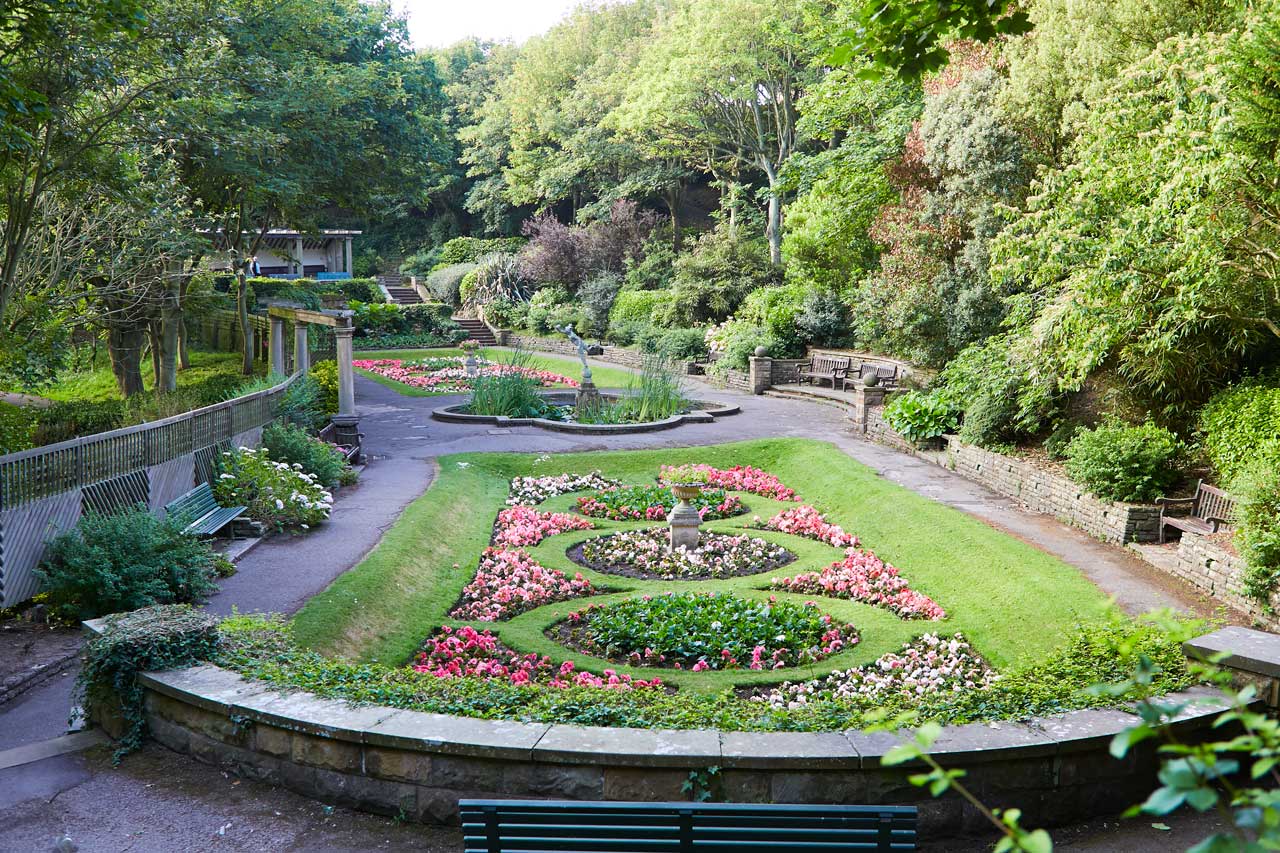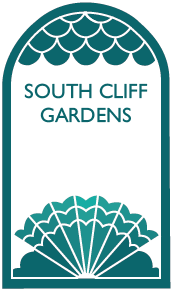In 1911 work began on the construction of a new addition to South Cliff Gardens, the Italian Gardens which would go on to become one of its most outstanding and loved features.

The Italian Gardens were designed by prolific Scarborough Civic Engineer Harry W Smith who also added the now lost tidal bathing pool on the site currently occupied by the Star Map. In fact much of the stone work used to make the features in the Italian Gardens came from the excavation work on that tidal pool project.
The gardens were built on a location which had previously comprised of two small rose gardens. They were included in the purchase of 13 acres of land by the Scarborough Corporation from George Lord Beeforth, a former Mayor of the town who had a strong connection with South Cliff having invested in the building of many of the large houses on the Esplanade overlooking the gardens including his own home Belvedere.
The gardens are now grade II listed on the English Heritages Register of Historic Houses and Gardens and boast a number of notable features including an ornate lily pond complete with a statue of Mercury which was donated by wealthy business man and friend of Smith’s Alfred Shuttleworth. The original statue was cast in led, it has since been replaced by a resin copy and still makes a striking focal point at the heart of the gardens.
Two large classical pavilions top either end of the gardens and lead onto a series of terraces which draw visitors down into the main flat planted area of the design made up by of a series of formally laid out flower beds.
There is ample seating for visitors to enjoy the tranquillity of the gardens and observe the rich diversity of wildlife that inhabits them. The pond is the perfect place to watch out for dragon and damsel flies and there are many feathered visitors to the area, the eagle eyed may even be able to spot tree creepers high up in the canopy of mature trees which surround the site.
FUN FACTS: Mercury is the Roman god of a diverse number of things including shopkeepers, merchants, travellers and transporters of goods, thieves and tricksters. He stands for financial abundance and success. The statue in the Italian Gardens is based on a 16th Century original that once adorned the fountain in The Villa de Medici in Rome. To help him decide where to place the statue Harry W Smith had one of his workers assume the same pose on the pedestal in the pond.

